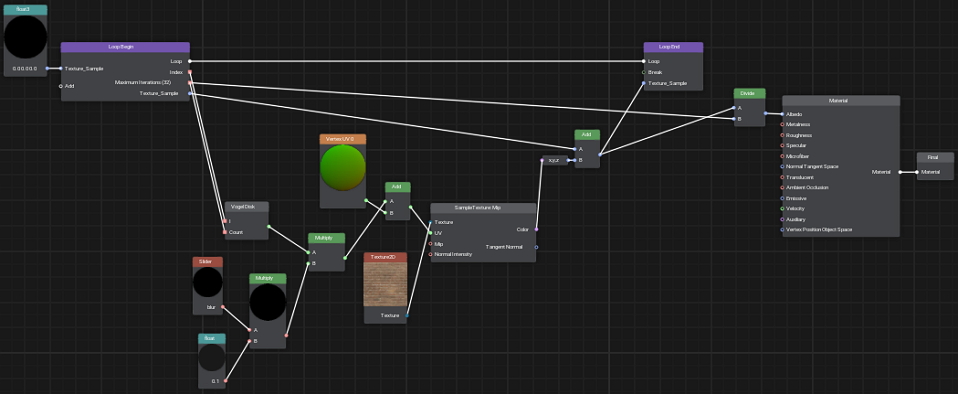Loop Sample
This material graph sample demonstrates how to use loops when creating materials.
Albedo RGB data for the Mesh Opaque PBR material are generated in the loop: the initial texture (Texture node) is applied 32 times (Maximum Iterations) with a uniform UV shift along the points on a Vogel Disk controlled by the blur Slider parameter node (adjustable via the Parameters panel in UnigineEditor).
The Loop Begin node has the only variable Texture Sample float3 vector. The Maximum Iterations corresponds to the desired number of samples and is set to 32.
The logic of each iteration lays between the Loop Begin and Loop End nodes. Each time the following steps are performed:
- The Index of the current iteration and the number of all iterations are passed to the Vogel Disk node providing a uniform UV shift.
- The UV shift is multiplied by the blur value (divided by 10), i.e. the intensity of blur is changed.
- The resulting UV shift is added to the texture coordinates (Vertex UV 0 node).
- The RGB value sampled from the texture is added to the previous Texture Sample value and passed to the Loop End node as the result of this iteration.
Thus the Texture Sample value is iteratively increasing up to the last iteration.
The result of the Add node is also connected to the Divide node which performs color intensity reduction (divides the resulting value by the number of loop iterations - increments of color values).
